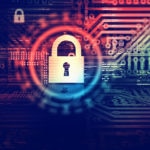Biohacking is becoming the new DIY activity
"The idea is that if you share science and enable different groups to participate this could stimulate innovation. Making technology available to end users is a good idea in general, because they know their needs best," claims Ellen Jorgensen at the TEDGlobal 2012 conference ‘Biohackers: you can do it too.’

After graduating in biology, Mac Cowell began working at iGEM attracted by the bioengineering possibilities, but a year later -at 24 years of age- she was no longer enjoying her work.Consequently, she decided to sell her car and set up DIYbio an organization devoted to promoting biology accessible to everyone, based on a philosophy of open knowledge and low-cost technological solutions.
Its members adhere to the so-called ‘biohacker’, movement, a term not so much inspired by the more intrusion-related hacking aspect, but rather by hacker ethics: the possibility of using the potential of existing technology to surmount new challenges. While some have been practicing it with programming codes and chips, others started, at the turn of the century, to apply it to DNA and body tissue. Moreover, elements like hacklabs and the garage set-up culture is also shared...
Alarmism and security in biohacking
The use of the term hacking has not shed itself of its negative connotations. Indeed the Oxford Dictionary defines definición de biohacking as "the activity of exploiting genetic material experimentally without regard to accepted ethical standards, or for criminal purposes." Nonetheless, biohacking is an activity that is characterized by its practice on the fringes of academia, adhering as it does to the open code and bringing together biology enthusiasts though these may be lacking in any specific formal training.
In fact, 2011 saw the network of DIYbio labs in Europe and the US promoting the establishing of a code of ethics to regulate its activities, respecting biological systems and observing lab safety rules. A mere one year later, the FBI organized a three-day conference on DIYbio and Security together with members of the main biohacking labs. In 'The Scientist', Dustin Holloway, from the Harvard Medical School's Medical Ethics division assessed amateur science in the following terms: "While there is no evidence that DIYbio represents a national security threat of this sort – on the contrary, the movement is founded on the principles of innovation, entrepreneurship, accessible science and education".
The underground: transhumanism
Of course, as is the case with all culture on the fringes of the institutional world, it also has its own underground expression: there are biohackers that encourage extreme bodily modification to enhance the potential of the human body..., but even these manifestations of biohacker culture are coming up with useful innovations: Tim Cannon implanted an under-skin device (Circadia) without medical assistance or using an anesthetic. This device, the source code of which is posted on the Internet, transmits biometric information about its host to any Android-powered device.
On the other hand, biohacking has spurred advances in a type of device that, moreover, constitutes one of its main work tools: the polymerase chain reaction (PCR), technology developed by the 1993 Nobel Chemistry Laureate Kary Mullis. This technology makes it possible to create millions of copies of the same, particular DNA sequence, thus it has numerous applications in the field of genetic engineering (cloning), forensic science (identification of individuals) and paleontology (classification of living beings).
Though the gradual cheapening of this device was a key factor in the appearance of biohacking, the definitive leap in terms of the general public has come about as a result of the OpenPCR, a project that has its origin at the heart of DIYbio. This is an open-specification, Arduino-based kit that is sold ready-to-assemble for an affordable price of US$600. Any DIY enthusiast can sequence and identify DNA with this Arduino-based chip device.